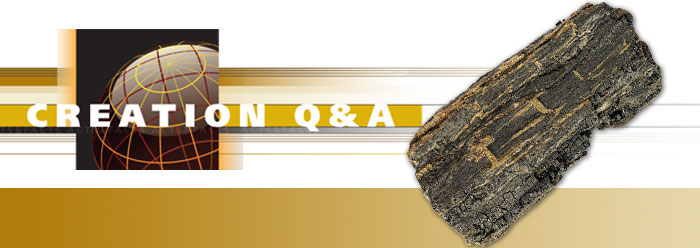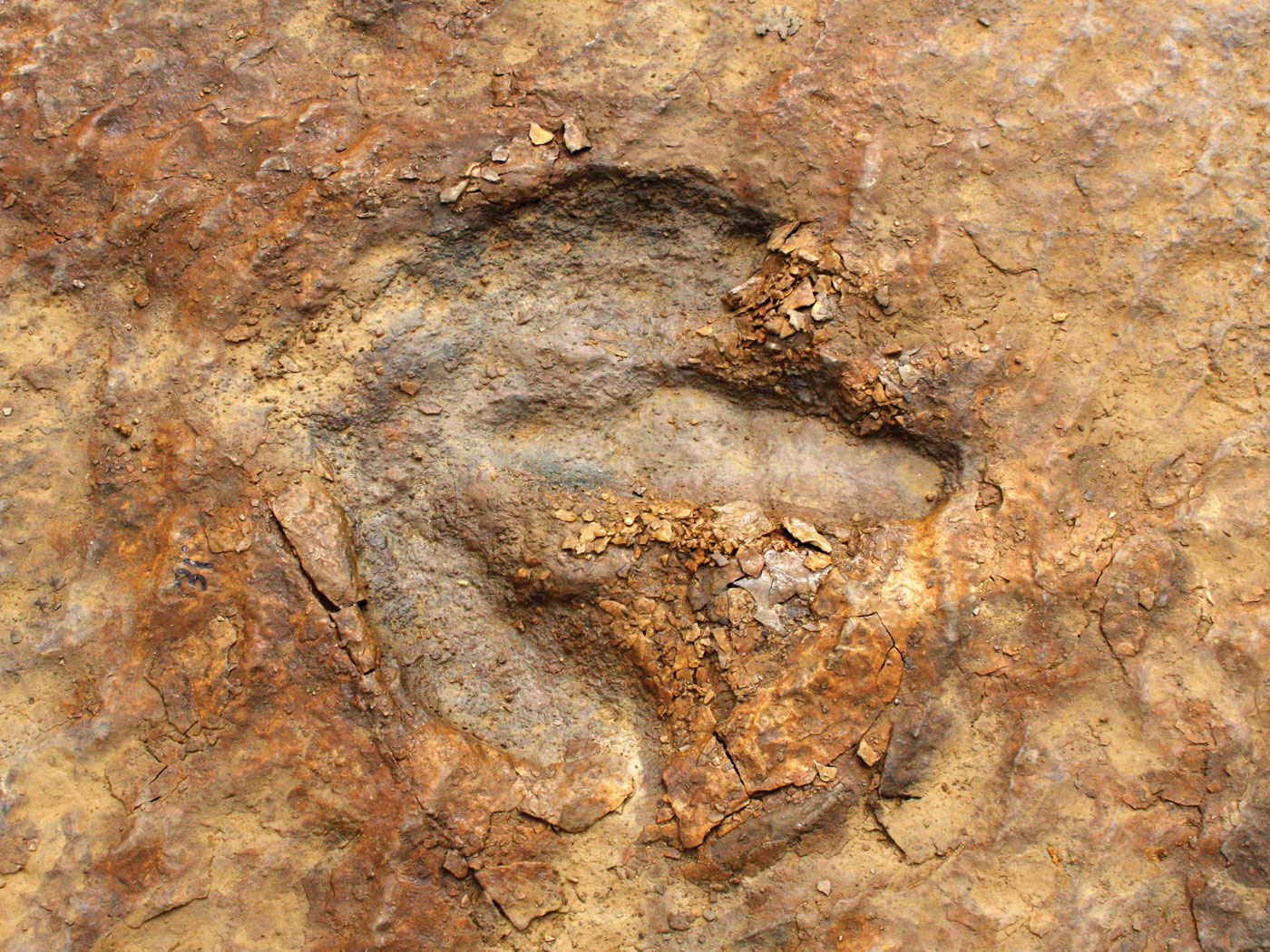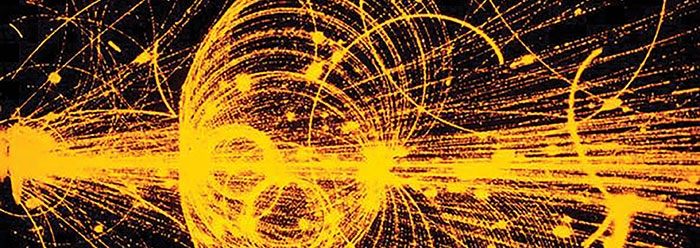The field of radiocarbon dating has become a technical one far removed from the naive simplicity which characterized its initial introduction by Libby in the late 1940's. It is, therefore, not surprising that many misconceptions about what radiocarbon can or cannot do and what it has or has not shown are prevalent among creationists and evolutionists - lay people as well as scientists not directly involved in this field. In the following article, some of the most common misunderstandings regarding radiocarbon dating are addressed, and corrective, up-to-date scientific creationist thought is provided where appropriate.
MYTH #1. Radiocarbon is used to date the age of rocks, which enables scientists to date the age of the earth.
Radiocarbon is not used to date the age of rocks or to determine the age of the earth. Other radiometric dating methods such as potassium-argon or rubidium-strontium are used for such purposes by those who believe that the earth is billions of years old. Radiocarbon is not suitable for this purpose because it is only applicable: a) on a time scale of thousands of years and b) to remains of once-living organisms (with minor exceptions, from which rocks are excluded).
MYTH #2 Radiocarbon dating has established the date of some organic materials (e.g., some peat deposits) to be well in excess of 50,000 years, thus rendering a recent creation (6 to 10 thousand years ago) impossible.
Some organic materials do give radiocarbon ages in excess of 50,000 "radiocarbon years." However, it is important to distinguish between "radiocarbon years" and calendar years. These two measures of time will only be the same if all of the assumptions which go into the conventional radiocarbon dating technique are valid. Comparison of ancient, historically dated artifacts (from Egypt, for example) with their radiocarbon dates has revealed that radiocarbon years and calendar years are not the same even for the last 5,000 calendar years. Since no reliable historically dated artifacts exist which are older than 5,000 years, it has not been possible to determine the relationship of radiocarbon years to calendar years for objects which yield dates of tens of thousands of radiocarbon years. Thus, it is possible (and, given the Flood, probable) that materials which give radiocarbon dates of tens of thousands of radiocarbon years could have true ages of many fewer calendar years.
MYTH #3. The shells of live freshwater clams have been radiocarbon dated in excess of 1600 years old, clearly showing that the radiocarbon dating technique is not valid.
The shells of live freshwater clams can, and often do, give anomalous radiocarbon results. However, the reason for this is understood and the problem is restricted to only a few special cases, of which freshwater clams are the best-known example. It is not correct to state or imply from this evidence that the radiocarbon dating technique is thus shown to be generally invalid.
The problem with freshwater clams arises because these organisms derive the carbon atoms which they use to build their shells from the water in their environment. If this water is in contact with significant quantities of limestone, it will contain many carbon atoms from dissolved limestone. Since limestone contains very little, if any, radiocarbon, clam shells will contain less radiocarbon than would have been the case if they had gotten their carbon atoms from the air. This gives the clam shell an artificially old radiocarbon age.
This problem, known as the "reservoir effect," is not of very great practical importance for radiocarbon dating since most of the artifacts which are useful for radiocarbon dating purposes and are of interest to archaeology derive from terrestrial organisms which ultimately obtain their carbon atoms from air, not the water.
MYTH #4. Samples of coal have been found with radiocarbon ages of only 20,000 radiocarbon years or less, thus proving the recent origin of fossil fuels, probably in the Flood.
I am not aware of any authentic research which supports this claim. Also, it does not coincide with what creationist scientists would currently anticipate based upon our understanding of the impact of the Flood on radiocarbon.
It is not difficult to see how such a claim could arise, however. There are two characteristics of the instrumental measurement of radiocarbon which, if the lay observer is unaware, could easily lead to such an idea.
First, any instrument which is built to measure radiocarbon has a limit beyond which it cannot separate the signal due to radiocarbon in the sample from the signal due to background processes within the measuring apparatus. Even a hypothetical sample containing absolutely no radiocarbon will register counts in a radiocarbon counter because of background signals within the counter. In the early days of radiocarbon analysis this limit was often around 20,000 radiocarbon years. Thus, all the researcher was able to say about samples with low levels of radiocarbon was that their age was greater than or equal to 20,000 radiocarbon years (or whatever the sensitivity limit of his apparatus was). Some may have mistaken this to mean that the sample had been dated to 20,000 radiocarbon years.
The second characteristic of the measurement of radiocarbon is that it is easy to contaminate a sample which contains very little radiocarbon with enough radiocarbon from the research environment to give it an apparent radiocarbon age which is much less than its actual radiocarbon age. For example, a sample with a true radiocarbon age of 100,000 radiocarbon years will yield a measured radiocarbon age of about 20,000 radiocarbon years if the sample is contaminated with a weight of modern carbon of just 5% of the weight of the sample's carbon. It is not too difficult to supply contaminating radiocarbon since it is present in relatively high concentrations in the air and in the tissues of all living things including any individuals handling the sample. For this reason special precautions need to be exercised when sampling materials which contain only small amounts of radiocarbon.
Reports of young radiocarbon ages for coal probably all stem from a misunderstanding of one or both of these two factors. Measurements made using specially designed, more elaborate apparatus and more astute sampling-handling techniques have yielded radiocarbon ages for anthracite greater than 70,000 radiocarbon years, the sensitivity limit of this equipment.
MYTH #5. Continuous series of tree-ring dated wood samples have been obtained for roughly the past 10,000 years which give the approximate correct radiocarbon age, demonstrating the general validity of the conventional radiocarbon dating technique.
Several long tree-ring chronologies have been constructed specifically for use in calibrating the radiocarbon time scale. By radiocarbon dating a piece of wood which has been dated by counting the annual growth rings of trees back to when that piece of wood grew, a calibration table can be constructed to convert radiocarbon years to true calendar years. Of course, the table, so constructed, will only give the correct calibration if the tree-ring chronology which was used to construct it had placed each ring in the true calendar year in which it grew.
Long tree-ring chronologies are rare (there are only two that I am aware of which are of sufficient length to be of interest to radiocarbon) and difficult to construct. They have been slowly built up by matching ring patterns between trees of different ages, both living and dead, from a given locality. As one might expect, the further back the tree-ring chronology extends, the more difficult it becomes to locate ancient tree specimens with which to extend the chronology. To alleviate this problem it seems, from the published literature, to be a common practice to first radiocarbon date a large number of potential tree specimens and then select those with appropriate radiocarbon age for incorporation into the tree-ring chronology. Such a procedure introduces a bias into the construction of the tree-ring chronology for the earliest millennia which could possibly obscure any unexpected radiocarbon behavior.
It is not clear to what extent this circular process has influenced the final tree-ring calibrations of radiocarbon. Efforts by creationist scientists to obtain the raw data from which the oldest tree-ring chronology has been constructed to investigate this possible source of bias have so far not met with success. Until the raw data does become available for general scrutiny, creationists are clearly justified in maintaining a high degree of skepticism.
In any event, the calibration tables which have been produced from tree rings do not support the conventional steady-state model of radiocarbon which Libby introduced. Rather, they lend support to the idea that significant perturbations to radiocarbon have occurred in the past.
MYTH #6. Creationists are only interested in debunking radiocarbon.
Creationists are interested in the truth. This involves exposing areas of weakness and error in the conventional interpretation of radiocarbon results as well as suggesting better understandings of radiocarbon congruent with a Biblical, catastrophist, Flood model of earth history. At ICR research into alternative interpretations of radiocarbon which are not in conflict with the Biblical record of the past continue to be actively pursued and a special radiocarbon laboratory is being developed for research into the method.
Radiocarbon holds unique potential for the student of earth history who adheres to a recent creation. It is doubtful that other radiometric dating techniques such as potassium-argon or rubidium-strontium will ever be of much value or interest to the young-earth creationist who desires to develop further our understanding of the past because they are only applicble on a time scale of millions or billions of years. Radiocarbon, however, is applicable on a time scale of thousands of years. A proper understanding of radiocarbon will undoubtedly figure very significantly into the unraveling of such questions as when (and possibly why) the mammoths became extinct, the duration of the glacial period following the Flood, and the general chronology of events from the Flood to the present.
Creationists are not so much interested in debunking radiocarbon as we are in developing a proper understanding of it to answer many of our own questions regarding the past. At the present time it appears that the conventional radiocarbon dating technique is on relatively firm ground for dates which fall within the past 3,000 years. For periods of time prior to this, there are legitimate reasons to question the validity of the conventional results and seek for alternative interpretations.
* At time of publications, Dr. Aardsma was Chairman of the Astro/Geophysics Department in the ICR Graduate School. He received his Ph.D. from the University of Toronto doing research in accelerator mass spectrometry, a technique now widely used in radiocarbon dating.
Cite this article: Aardsma, G. A. 1989. Myths Regarding Radiocarbon Dating. Acts & Facts. 18 (3).



















